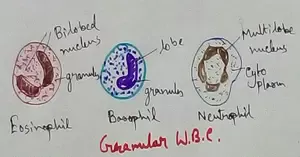What do we Learn from Identification of Individuals and Populations?
Individual: It is a distinct living entity or package which carries out all life processes in its body, separate from those in other individuals. Individual organism is the basic unit of ecological hierarchy as it continuously exchanges materials and information with its environment. When new individual develop from pre existing one, then hereditary characters are transferred. Individual of the same race may differ due to - developmental stages (they differ from the adults, E. larva, pupa, juvenile or young gametophyte), sexual dimorphism (external differentiation of male and female individuals, e.g. cycas, date, papaya) and polymorphism (phenomenon of having different forms of individuals within the same organisms, e.g. obelia, volvox, honey bee, termite).
Populations: Population is a grouping of similar individuals in a particular geographical area or a space. Local populations include different populations of the same organisms present in particular geographical area. May be there are several ecotypes (a local population adapted genetically to its particular environment) of the same organism which show variations amongst them. Variations also observed in tribes ( two human tribes living in same geographical area), breeds ( externally demarcated group maintained by control breeding e.g grey hound, bull dog etc.) ,races (similar to breeds which are maintained by localised or selective breeding) and varieties (variations found in a species which are quite different in structure and behaviour, e.g. Indian crow and Srilankan crow.
Parameters that describe a population are:
1. Total number of individuals or populations size.
2. Kind and ratio of individuals like male and female, pre reproductive and post reproductive.
3. Space or area
4. Time
5. Population density.
Factors that affect populations are:
Natality: Rate of production of new individuals per unit of population per unit time.
Mortality: Rate of loss of individuals per unit time due to death.
Population dispersal: This includes emigration, immigration, migration.
Age distribution: Number of young individuals and older individuals.
Population growth rate: Number of individuals added per unit populations per unit time.
Resources: Population survive on the resources present including food, water, space.
Abiotic factors: Population size and growth influenced by duration of light, intensity of light, humidity, temperature, rainfall, snow etc.
Biotic factors: Growth rate of certain population decreases with increase in density.
Population of fluctuations: It is of two type irruptive and cyclic.
We know different sides from identification of individuals and populations. They are follows:
1. Find similarities: identification of individuals and populations help scientist to find the similarities between individuals of same species .E.g suppose all the insects ( mosquito, cockroaches, fly etc.) have joined legs, compound eyes, exoskeleton made of chitin. All of this are included in arthropods.
2. Find dissimilarities: identification of individuals and populations help us to find dissimilarities between different individuals of different species. E.g. bats have wings, birds have wings but they belong to different phylum. Bat is mammal and birds are aves.
3. Determine characteristics: by identifying individuals and populations we are able to make characteristics of the individuals from their similarities and dissimilarities with different species.
4. Classification: From the characteristics, similarities and dissimilarities of individuals and populations scientist are able to classify and placed in proper category.
From What Different Criteria Would you Choose to Classify People you Meet? to HOME PAGE
Recent Articles
-
Formed Elements of Blood | Erythrocytes | ESR |Leukocytes |Neutrophils
Jan 15, 26 01:25 AM
Formed elements formed elements are constitute about 45 % of blood afeias haematocrit value packed cell volume mostly of red blood corpuscles and are of 3 types- erythrocytes, leukocytes and blood pla… -
What Is Plasma? | Blood Plasma | Proteins | Nutrients | Cholesterol
Nov 07, 25 10:29 AM
Blood is a mobile fluid which is a connective tissue and is derived from the mesoderm like cell any other connective tissue. Colour of blood is reddish and that flows inside the blood vessels by means… -
Disorders of Respiratory System | Tuberculosis | Pleurisy | Emphysema
Oct 28, 25 11:39 PM
Tuberculosis is very common disease and is caused by a type of bacteria called Mycobacterium tuberculosis. This disease causes different trouble in the respiration and infection of several parts of th… -
Regulation of Respiration | Respiratory Centres | Inspiratory Area |
Oct 14, 25 12:13 AM
Respiratory Centre is the area that controls the rate of respiration and it is observed to be located in medulla oblongata and pons. Respiratory Centre has the following will dispersed components like… -
Explain Transport of Gases | External Respiration | Tissue Respiration
Oct 09, 25 11:35 PM
In humans gaseous exchange is completed in the following ways the steps are - External Respiration or Breathing - Breathing in false taking in of Oxygen and giving out of carbon dioxide in the body. M…





New! Comments
Have your say about what you just read! Leave me a comment in the box below.